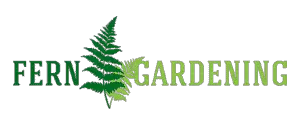Ferns can grow rapidly and put on an exuberant amount of foliage in a relatively short space of time. In the garden, some ferns spread through borders or increase the size and spread of their crown of fronds each year. Given that ferns are different from flowering plants in important ways, it is natural to wonder if their growth patterns are different too, and one common query is whether ferns can grow all through the year.
Ferns follow an annual growing season similar to other plants, with the seasonal details varying with the local climate. Temperature and light levels through the day are the key factors, and even evergreen ferns that maintain their foliage all year round will become dormant in winter and not put on fresh growth until the spring. Fern care should be adjusted to this cycle to ensure year round health.
For deciduous ferns, it is fairly obvious that the annual cycle of dying back in fall and re-emerging in spring follows the same pattern as other perennial plants. For evergreen ferns, it is less obvious when growth slows and restarts, and the timing can also vary significantly between fern species and the local environment. Where evergreen ferns are grown indoors as houseplants – like the ever-popular Boston fern – it is even less clear when the plant is in a growth period, and when it is not.

Boston fern
- Nephrolepis exaltata
- Evergreen
- Partial shade
- Height: up to 1 m
- Soil: acid or neutral. Moist, well-drained.
Judging when a fern will be growing depends on understanding how the local environmental conditions change through the year – in particular the range of temperatures between winter and summer, and the intensity of sunlight at noon and the length of the day through the year.
Hardiness zones and growing seasons
To get a broad understanding of the timing of the growth year, the standard plant hardiness zones are a good starting point. This map, maintained by the US department of agriculture, maps the temperature ranges expected during winter and summer in different zones across the US, with similar maps being in use across the world.
For temperate zones (defined as those regions between the subtropical and the polar zones) the growth season basically runs from the last frost in spring to the first frost of fall. This is the experience that most of us will have, with the dates when the seasons come and go varying on our specific latitude.
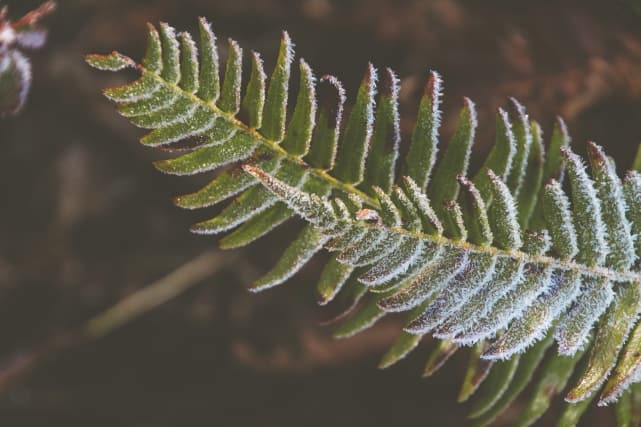
Those living closer to the equator will have more stable, higher temperatures and a more consistent day length through the year – meaning the growing season can last for much more of the year. In more northerly or southerly regions the growing season will be much shorter. In Alaska, the growth season can be as short as 100 days over the summer, but this will also be a time when the day length is very long (24 hours long in the far north) meaning plants will have abundant sunlight for growth, despite this limited window.
Although these rules of thumb apply in most cases, there are some exceptions – quirky spots where local atmospheric conditions can defy the expectations for latitude and season. These microclimates can defy the normal growing seasons and hardiness limits. A microclimate could be as small as a sunny corner of a garden surrounded by concrete, or as large as a coastal region favored by a warm ocean current.
Indoor ferns
The growing season in the garden will be dictated by the local climate, but houseplants are protected from the vagaries of the weather. Most of us maintain our houses within a narrow temperature band, and this environment resembles a tropical zone where seasonal variation is limited. This means that the growing season is affected more by changes in day length, because of the changes in sunlight.
Many popular indoor species of ferns are chosen because they thrive under these conditions. Nevertheless, even favorites like Boston fern, Maidenhair fern and Lemon button fern do have distinct dormant periods during the winter.
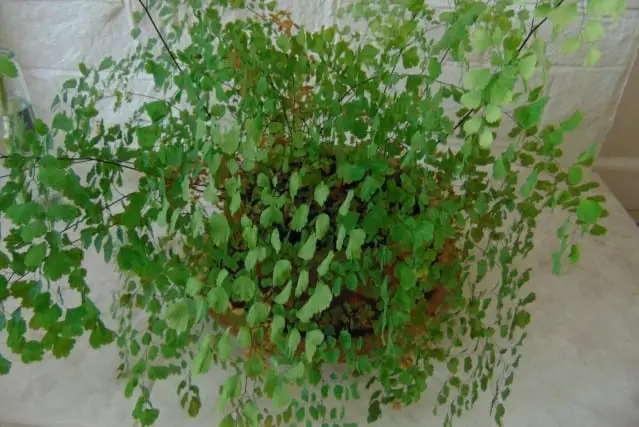
Maidenhair fern
- Adiantum raddianum
- Evergreen
- Partial shade
- Height: up to 0.5 m
- Soil: neutral or alkaline. Moist, well-drained.
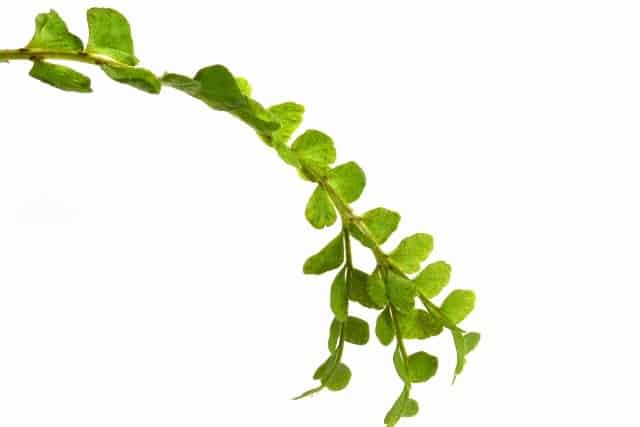
Lemon button fern
- Nephrolepis cordifolia (duffii)
- Evergreen
- Partial shade
- Height: up to 0.5 m
- Soil: acid or neutral. Moist, well-drained.
This is not always obvious, given that evergreen ferns are favored for indoor plants, but does mean that the care and maintenance needs of the fern should be adjusted.
Fern care in winter
During the dormant winter season, ferns will be using less energy and water and need fewer nutrients. That means the frequency of watering should be reduced, as the soil will be slower to dry out. There is a risk of overwatering leading to root rot during this period, if the care routine is not adjusted to conditions.
Similarly, use of fertilizer during the dormant period will do more harm than good, as it can lead to damage to the roots, and the fern does not need the additional feed, nor will it respond to it with growth. In general, ferns rarely need additional fertilizer and certainly not during the winter.
The dormant period is also a good opportunity to prune back dead or straggly fronds, and to tidy up the plant in general to make way for new growth in the spring. Similarly, if a fern has become pot bound, it is best to divide and repot the plant towards the end of dormant period, and before new growth begins.
For outdoor ferns, winter is a good time to mulch the area around the plants, especially as ferns have roots and rhizomes that can be quite superficial and therefore more vulnerable. This will help insulate the roots against the worst of the cold, and also provide some slow release feed in the spring period when growth is most rapid. Take care not to get compost-based mulch into the crown, though, as this could lead to rot. Dead leaves or straw are better for insulating the crown against cold.
Planting times
The growing season also influences the best time to plant out ferns, and again this timing will depend on the local climate. In principle ferns can be planted out at any time of year, but practically there are constraints.
If you live in an area prone to wet falls and hard winters, it is best to plant out ferns in spring, to give the plant time to get established through the summer and be more resilient to damp or cold damage come the winter. In contrast, if you live in an area with milder winters but hot summers, the opposite is true. Late summer or fall is the best planting time, to give the fern the best chance of making it through the following summer without suffering too much in the heat.
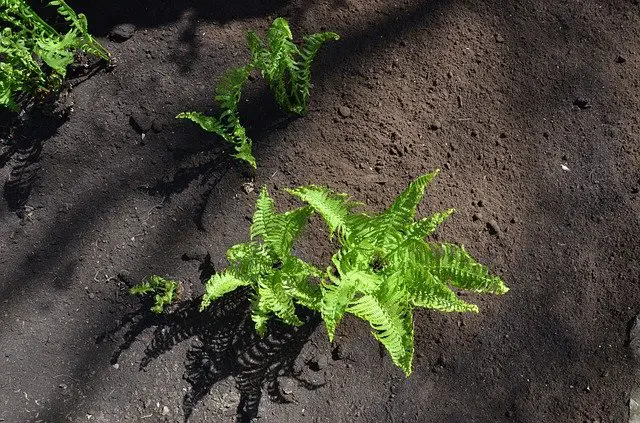
Ferns that don’t follow the rules
Finally, it is worth mentioning the fact that individual varieties of ferns can break these general rules, and have their own unique growth cycles. Some semi-evergreen varieties such as the Christmas and tassel ferns have short dormant periods in the winter, and can instead have their growth arrested when soil temperatures increase.
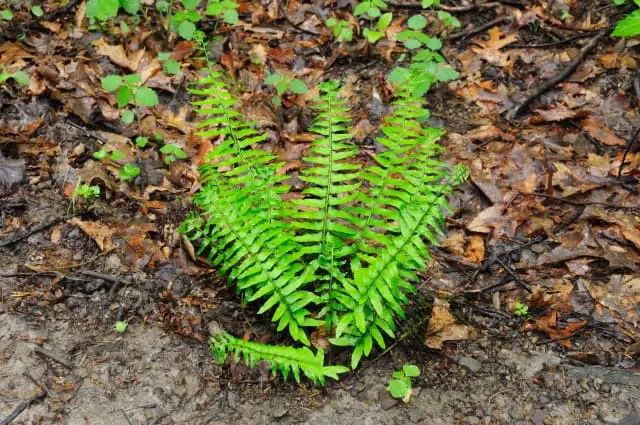
Christmas fern
- Polystichum acrostichoides
- Evergreen
- Partial shade
- Height: up to 1 m
- Soil: acid, neutral or alkaline. Moist, well-drained.
The resurrection fern deserves a special mention for the most idiosyncratic growth period. These ferns can survive almost complete dehydration, but then recover rapidly when watered for the first time. It has been claimed that this species could remain dormant for a century, and still be revived.
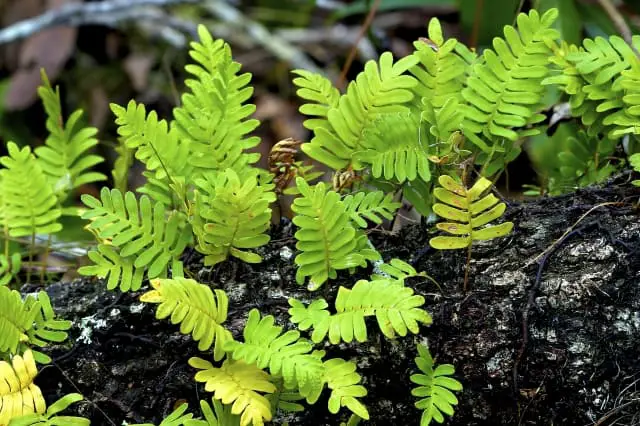
The natural world is full of wonders, and ferns have had millions of years to adapt to their own unique niches. One of the safest rules is that there will be some species somewhere that breaks all the rules.
Ferns will follow the growing season dictated by your local climate, and by the habits of the particular variety of fern you have planted. There is really no way around the need for local knowledge when figuring out when your own ferns will become dormant. This explains the popularity of gardeners almanacs in days past – and now we have the advantages of the information age to help us.
